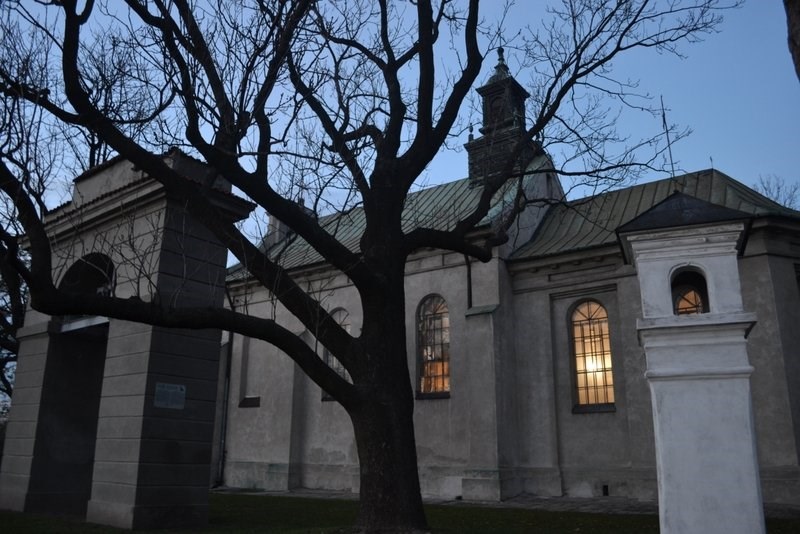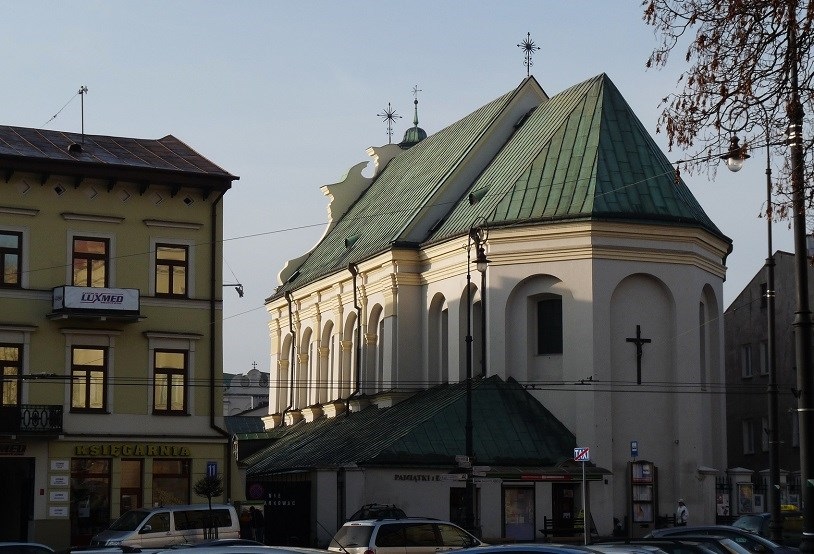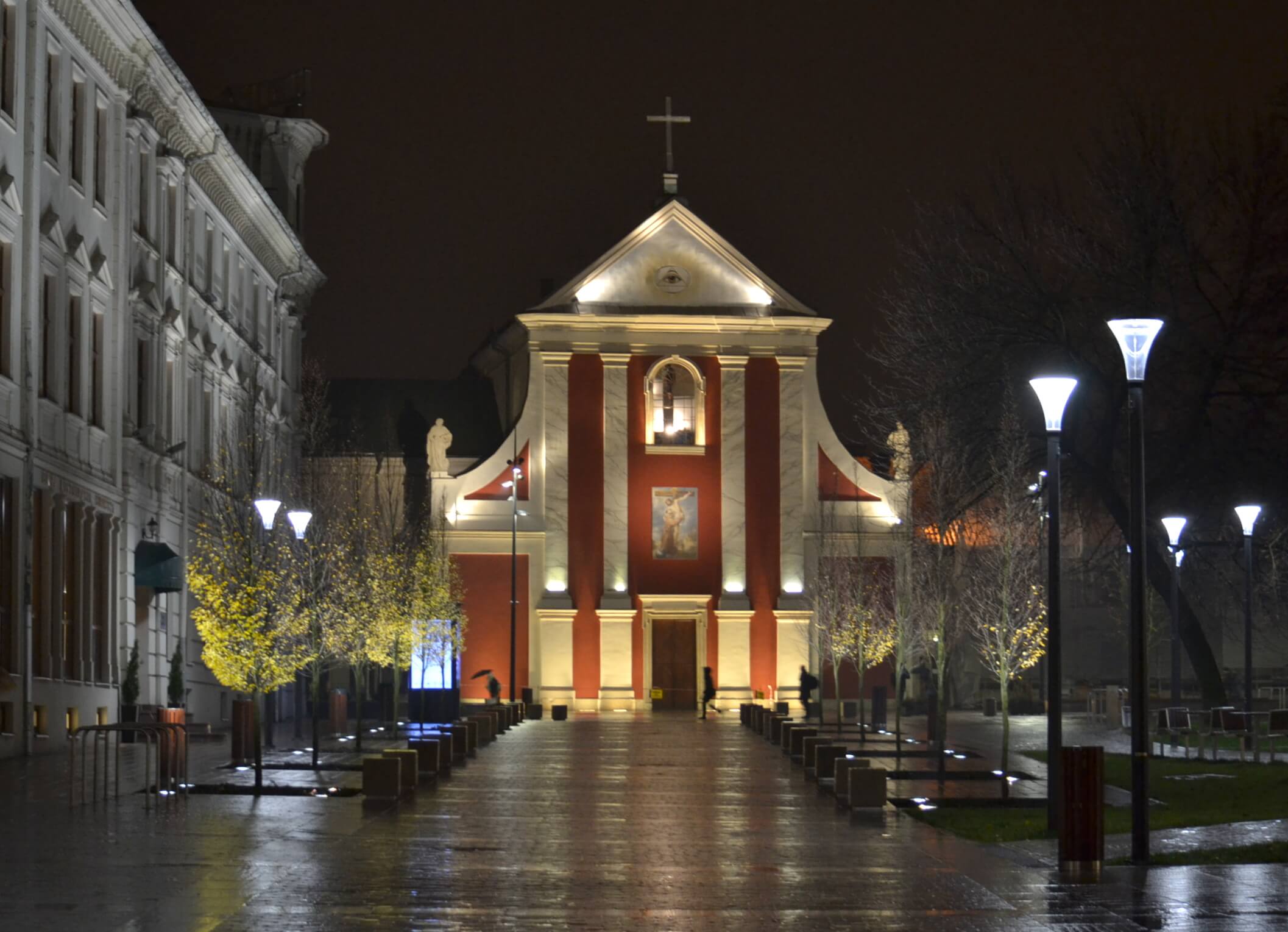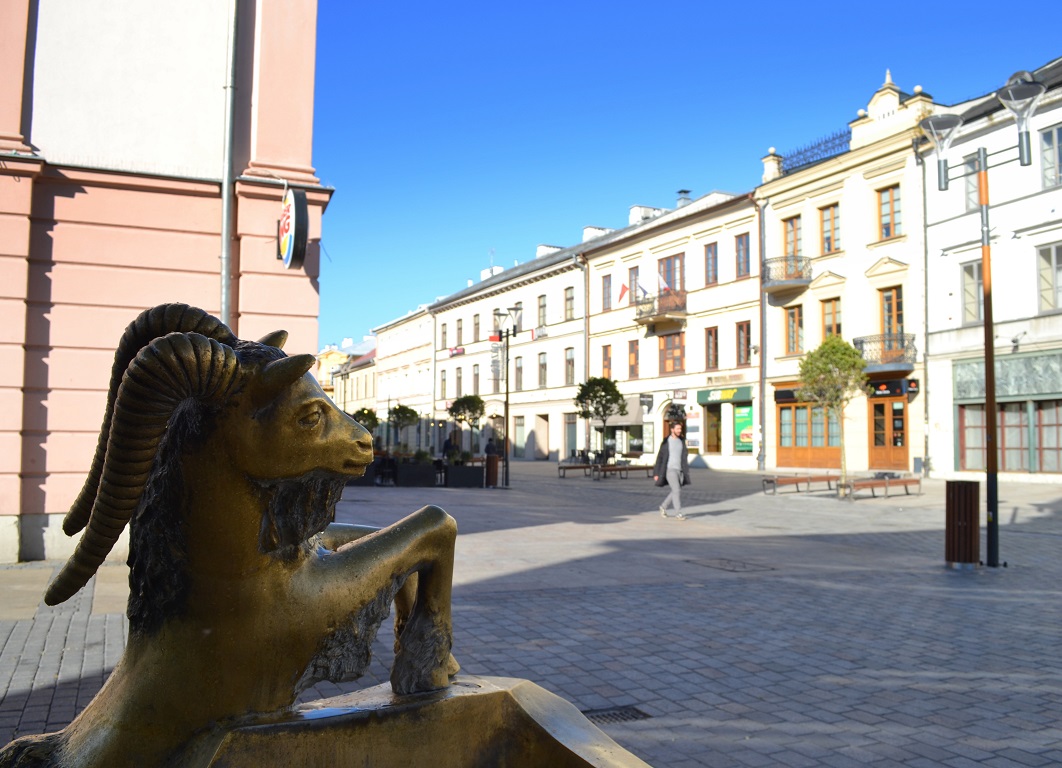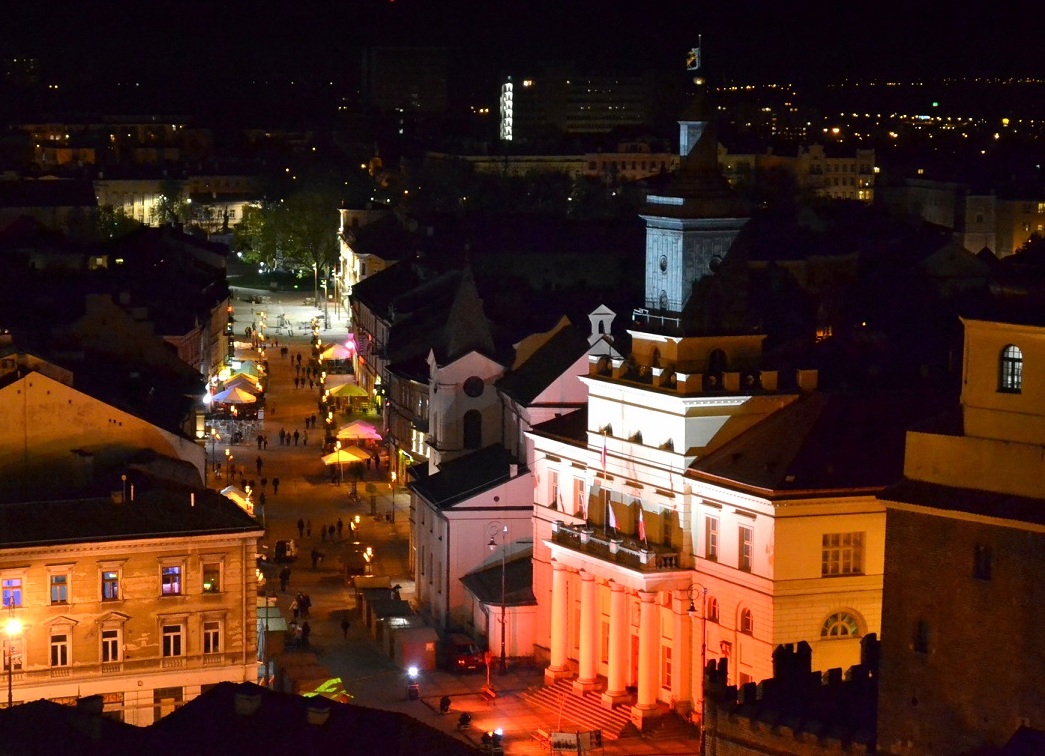City centre

The Church of the Holy Spirit is one of the oldest churches in Lublin. It was built in the years 1419-1421 from the foundation of Lublin burghers. The church adjoined the then existing hospital for the poor, the disabled, and terminally ill. The building currently adjacent to the church from the western side, reconstructed in the XIX century, used to be a part of the hospital. ...

This church was built in 1786 by Greek Orthodox merchants living in a small community in Lublin. There was a need to build a new temple as the Orthodox church in Ruska Street was given to the Greek-Catholic Church in the 17thc. The Lublin Greek Orthodox parish was subordinated to the Patriarch in Constantinople, but the small local community was unable to support the new temple financially, so consequently it began to fall into disrepair. ...

Before it was turned into a convent, the building in Świętoduska Street was a Renaissance fortified manor owned by the voivod Rafał Leszczyński, who intended to give it to the Lublin calvinist community. It was built in the years 1619-1622 by Jakub Balin and, after the calvinists left the city, it was bought by the Carmelite Sisters. The adaptation of the building lasted from 1630 to 1635. When the convent was completed, the construction of the temple began (1636-1640). ...

Legend has it that the first temple here was founded by Mieszko I in 986. The present church was built in the first half of the 16th c. on an escarpment towering over the Czechówka river valley. Owing to the rector of the parish, priest W. Turobojski, it was rebuilt in the Lublin Renaissance style in the first half of the 17th c. ...

The church and the convent were erected in the years 1636-1658 for the order of Bernadine Sisters, who came to Lublin in the beginning of the 17th c. Both buildings were founded by Piotr Czerny of Witowice. In the first half of the 18th c. a tower was constructed next to the church. The present look of the church is a result of reconstruction works undertaken after the fire in 1768. After the dissolution of the Bernardine Order in 1864, the buildings were given to diocesan priests. They were returned to the order in 1918, but the Sisters handed them over to the Jesuits in 1920. ...

Designed by Rudolf Negroni, the church and the adjacent convent building designated for St. Lazarus hospital were built in the first half of the 17th c. As a hospital church, it was located outside the city walls on the site of an old wooden chapel and hospital from the second half of the 16th c. ...

The Capuchin Order arrived in Lublin in 1721. Built in the years 1726-33, the church and the monastery complex were founded by Paweł Sanguszko and his wife Anna Lubomirska. It was designed by Karol Bay. The exterior form and the interior design of the church were meant to reflect the strict Capuchin monastic rule. The façade is modest and harmonious, decorated with pilasters, volute forms, and figures of St. Peter and St. Paul. In the centre of the triangle-shaped gable there is an oculus with the Eye of Providence. ...

The church was built in the years 1412–1426 for the Birgittine Order as a votive offering of King Ladislaus Jagiello for the victory in the battle of Grunwald predicted by St. Birgitta. According to the tradition, the church was erected by knights of the Teutonic Order held captive after the battle. ...

The part of Krakowskie Przedmieście between Litewski Square and the Old Town is lined with historic townhouses, which were transformed in the 19th c. into tenement houses. Decorative elements of the façades have survived on some of the buildings. Heading in the direction of the Old Town you can see two interesting buildings on your left – the 15th-century Church of the Holy Spirit and the New City Hall, the seat of Lublin’s authorities built on the site of the burnt-down church and monastery of the Discalced Carmelites. ...

The building of the current Town Hall was created as a result of the reconstruction of the former church and monastery complex belonging to the Discalced Carmelite friars, which was destroyed in a fire in 1803. After the fire, the friars moved to the former convent of the Discalced Carmelite nuns on Świętoduska Street. The destroyed buildings were bought by the City Hall with the intention of locating the new seat of the city authorities here. ...
Page 2 of 3







